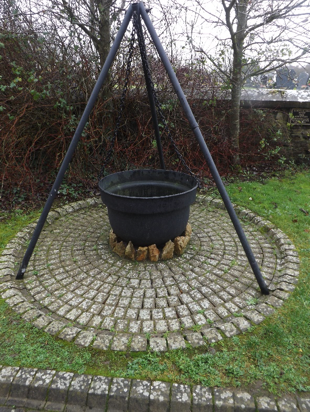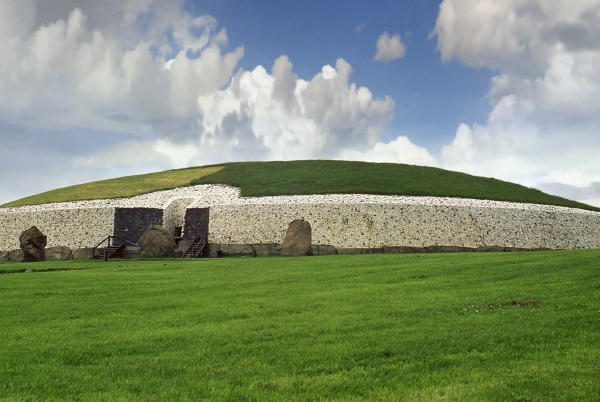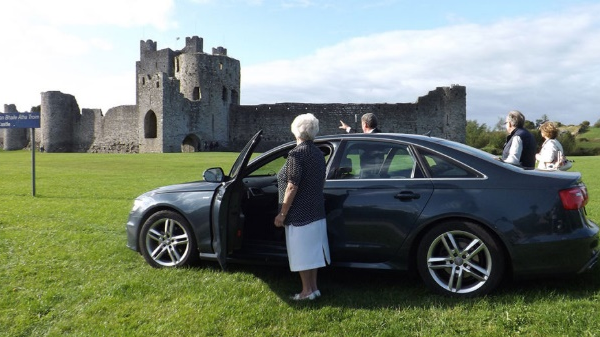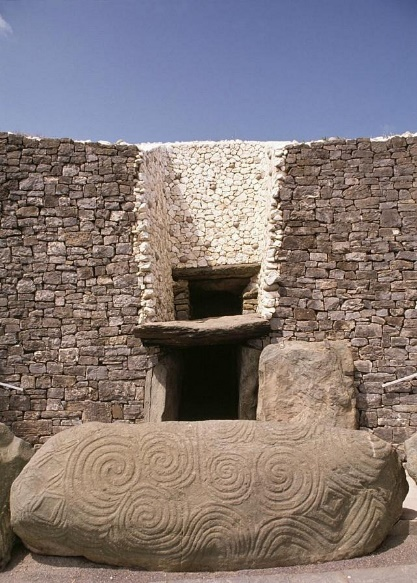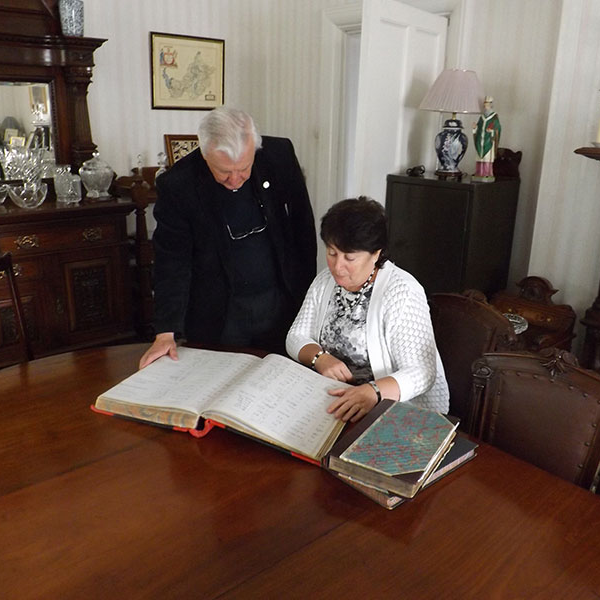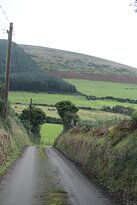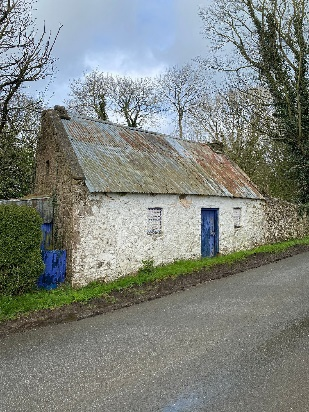The Famine
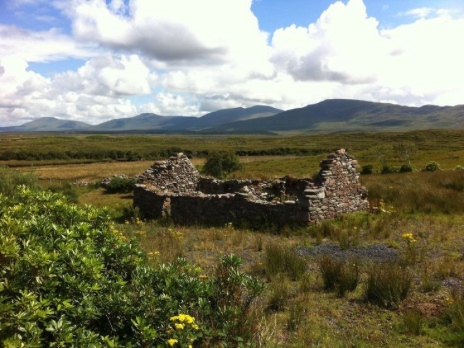

About Emigration and the Famine
Many of our clients are searching for that elusive Home which many of their ancestors have emigrated from. (See Personalized Research) We at My Ireland Family Heritage have a 95% chance of finding theses homes and we pride ourselves in finding this for you. The fire in the Public Record Office complex in the Four Courts during the Irish Civil War (1922) resulted in the severe damage and destruction of records. Although not all records from the Chief Secretary’s Office in Dublin Castle survive, especially from the period before 1836, sufficient material has survived to make the transportation records held in the National Archives a major source for American, Australians, Canadians and all areas of the Globe researching Irish ancestors.
Below are some statistics to illustrate the rise, fall and rise again of the population since 1841. The statistics also illustrate a massive population shift from the west to the east of the country and increasing urbanisation. Counties such as Mayo, Roscommon, Donegal and Leitrim have become depopulated while counties surrounding Dublin including Wicklow, Kildare, Louth and Meath have seen rapid population growth in recent years
It is important for you as an individual to know that there are Genealogy Companies and there are Touring Companies but on your behalf we do it all. We stay with you throughout the process we will not hand your research to a different company. We pride ourselves in finding your family and taking you there.
We feel it is imperative for you to know the whole history of emigration in Ireland and that when your Tour is customised it is completely with you and for you so that you enjoy the experience completely.
For example the Famine in Ireland was responsible for over 3 million people leaving or dying in Ireland and your story may be part of that History. It may be important to make sure you see if not all at least one or two of the following Famine Workhouse, Famine Graveyard or a Famine Ship.
To enjoy the History and Heritage Ireland has to offer and get an in Depth background with our expert guide. My Ireland family Heritage suggest that you look to include a One Day Tour which will enhance your Townland experience to any County in Ireland which we customise to your requirements as an Ancestral Townland Experience Tour.
The Emigration Story
Many Ulster Scots Methodists, Presbyterians and Catholics left the Island of Ireland from the 1600s onwards.
The Transportation records for Ireland to Australia started in 1791 to 1853.
There were at least six Famines leading to much emigration between 1800 and culmination in the Great famine of 1845. Approximately 800,000 people left the Island of Ireland between 1820 and 1840 alone in search of a better life for their future generations.
By 1660 the Irish people owned 60% of the land and by the 1840s and the Great Famine the Irish people owned 5% of the land many were tenant Farmers renting from landlords and living in mud cabins or small Cottiers Cottages.
The Landlords system in Ireland made sure that only 750 families (Landlords) owned 50% of the land.
Between 1660 and 1840, Ireland experienced rapid population growth, rising from about 2 million in 1680 to over 8 million by 1840. In 1841, the population of the area now covering the Republic of Ireland was over 6.5 million people. The subsequent Great Famine and the emigration it caused had a dramatic effect, so that by 1871, the 32-county population had dropped by over a third to five million.
It is worth keeping in mind that most folk left Ireland around the Time of the great Famine 1845 – 50 in fact 550,000 went to New York alone. On arrival at New York Famine ships also known as Coffin Ships were presented with an expensive tariff if it was proven that disease was rampant on the ship so many Captains made the decision to head for Quebec for lighter tariffs.
When researching Irish family history there is one period which stands out This period remains one of the greatest and saddest periods in Irish history – ‘it is difficult to comprehend the magnitude of this event and even more difficult to think that some of your ancestors may have experienced this event.
Never the less many people have left Ireland from the Cromwellian period 1649-53 onward, Presbyterian, Methodist and Catholic often left due persecution and right through the period of 1700s after the introduction off “ The Penal Laws”. There were six famines alone between 1800 and 1850.
Researching the Great Famine can be very helpful and interesting in genealogical research in placing your family’s story in context. As well as figures, it provides an in-depth insight into the conditions in Ireland during the early 1800s up to the mid-1850s.
It was not just the failure of the Lumper potato which created the famine alone all though some families were eating up to 14 lbs of potatoes a day. It was the lack of a favourable wage with Cottiers being paid 10 pence a day the eventual lack of work for an oversized population.
The population of Ireland in 1837 was at a historical high. This is reflected in the census of 1841 four years later.
1841 census records shows how there were 8,175,100 people living in the four provinces of Ireland – Exactly 40 years later in 1881, this figure will have fallen by over 3 million to 5,174,836.
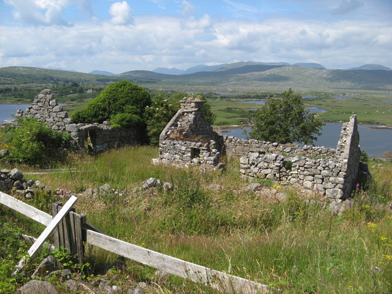

With so many people per family housing conditions were notoriously cramped and overcrowded. Irish peasants, these were people who did not own land were the worst off. They rented tiny plots of land off mostly English landlords who owned large estates in Ireland. Their housing conditions were extremely bad. The census in 1841 graded ‘houses’ in Ireland into four classes, the fourth and lowest class consisted of windowless mud cabins of a single room. It as in these mud cabins that nearly half of the rural population of Ireland lived. Disease was rampant and many people especially young babies and older people died of minor infections and viruses due to the terrible living conditions which were damp and cold.
When studying the famine our clients often ask why they not fish?
Off shore the waters around Ireland can be treacherous even in summer. In open rivers the Landlord will have owned all rights and policed the river accordingly. In Ireland at this time 50% of the Land was owned by 750 Landlord families throughout Ireland.
Irish people also had oatmeal and dairy products in their diet however, as the population grew and people became poorer, by the 1840s one-third of the population had ‘exclusive dependence’ on the potato for sustenance. The potato thrived in the moist, damp conditions in Ireland. As you can see, all the conditions were there for a serious catastrophe to happen and the Famine was just the tipping point for a nation living on the edge.
The Potato blight while there are other factors which worsened the effects of the famine, it was ultimately the ‘blight’ or rot of the potato crop that led to widespread starvation.
The potato fungus was not new at the time. Ireland had experienced potato blight and the loss of crops before. In fact six famines were recorded in the previous 50 years. In the 1830s, particularly bad outbreaks of potato blight in small localities led to hardship in some parts of the country and reduced many families to begging to stay alive.
However, it was 1845 when Ireland experienced the most widespread potato blight with almost half of the crop lost. People struggled to survive but starvation was avoided. In the spring of 1846, people planted even more potato seed in the hope that the blight of 1845 was once off. Tragically, they were mistaken and Autumn 1846 seen the potato completely wiped out by blight and the beginning of a downward spiral of deaths recorded as a result of starvation. In 1847 the death toll reached 280,000 and is known as Black 47 with death tolls reaching peak levels. At this stage, starvation was not the only killing machine, diseases that were somewhat contained before the famine became rampant – typhus, dysentery, small pox and typhoid fever. The Austerity of the Workhouse as seen on My Ireland Heritage Tours. As a last resort many people headed to the dreaded Famine House
It is estimated that one and a half million people died during the famine either directly from starvation or famine related diseases. The death of a person as a result of starvation and disease are only recorded in the accounts of survivors. Whatever the exact figure was, this was a changing catastrophe in Ireland’s history.
Mortality rates during the famine were uneven across the country however, no place was left unaffected.
Some counties lost in the region of 32% of its population with counties such as County Mayo, Roscommon and Sligo being hardest hit. The death rates for different parts of the country fluctuated during the famine years. For example West Cork a ‘notorious black spot’ had suffered the worst of the famine by 1847, while other counties continued to lose their people beyond the 1849 and into the early 1850s. Families were still emigrating well into the 1870s.
Emmigration had been taking place before the famine however, undoubtedly when the famine struck the emigration levels rose significantly. Before the famine it was the wealthier members of society emigrating however, during the famine it was the most destitute who flooded the ships to the USA, Canada and Australia.
Emigration was not an easy option by any means. The anxieties about leaving home and family and going to a foreign country were only compounded by the fact that they were leaving family and friends behind on a famine stricken isle with the chances of ever seeing them again. But this migration was one of ‘do or die’. Irish people fled Ireland in the hope of survival and another chance at life.
The Ship the Jeanie Johnson can be viewed on Our one day tour Dublin Famine experience, its claim to fame was it set sail from Valencia in County Kerry transporting 2,500 people to the new world and never lost a soul. USA and Canada became a hugely popular destination as fares were in the region of £5 a fare and 70 shillings. Assisted passage allowed for families to travel supported by the Commission of the Workhouse made up of Local landlords
Despite better quality and stronger ships making the trip to America, Canada and Australia more feasible, these were still perilous journeys fraught with risk and uncertainty. As well as coming up with the cash to pay for the ship fare, passengers also had to bring supplies including food and warm clothing. One can imagine how difficult this was for people already starving and with next to nothing but the clothes on their backs.
Passengers had only two options standard class or steerage. Standard class allowed passengers walk on the decks. Steerage passengers were treated worse. They were sent below the decks into overcrowded, confined spaces often not being allowed to use the deck. Steerage was the ship experience of the majority as it was the most they could afford.
The poignant and tragic reality for many of these migrants was that they never reached their salvation, their dream destination where they had longed to make their new lives. There were high death rates on these ships so high that they became referred to as ‘coffin ships’. Emigrants boarding these ships were often starving and didn’t survive very long aboard. As well as dying from starvation, disease was endemic.
The cramped conditions soon gave way to deeply unsanitary conditions. The ships especially the lower decks became breathing grounds for disease. Sickness and diarrhoea were commonplace’. On some ships up to 45% of passengers died during the voyage or shortly after arrival.
In County Meath just as an example One third of the population in 1851 lived in mud cabins – one roomed windowless and chimneyless excavations. The highest rates were in the north of the county, where labouring living standards were lower than north Cavan’s.
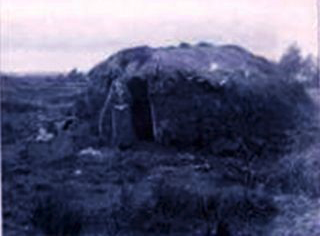
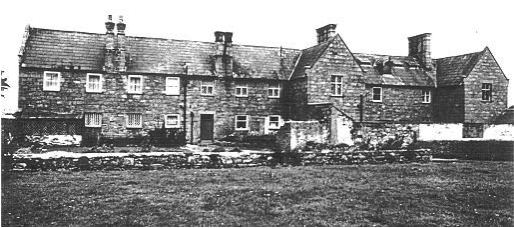
Many townlands had 80 per cent of its people living in such cabins and Loughbracken, Ardbracken and Mitchelstown had the next highest percentages. Even in Navan, where there was a boom in milling, brewing and other enterprises, almost two thirds of its people lived in the equivalent of mud cabins. These three generations of mud cabin inhabitants were “lost generations”. Their cabins and potato plots were gone and little written history about them survived and became known as the Vanished Irish
A document found for Cathy Cowing was very special indeed for the period 1820 . Given to My Ireland Family Heritage by a local family in Dunboyne County Meath and never seen on line for the Loughshallagh Potato Fields at Dunboyne. (See Unique Moments and Documents)
The Irish Workhouse designed by George Wilkinson or sometimes called “ The Famine House” became a feature of life between 1838-41 when 130 of them were built in Ireland to give respite to the Poor. By the time of the famine in Ireland they were accommodating up to 1,000 people in most cases a Graveyard was built close by for the poor inhabitants of which no markers ever exist for burials. There were 33 more built in 1850-51 and there are only a handful remaining in Ireland today.
The workhouse has been described as “the most feared and hated institution ever established in Ireland.”
The workhouse was an institution which operated in Ireland for a period of some 80 years, from the early 1840s to the early 1920s. There were 163 workhouses in total. If people could not support themselves, they could come into the workhouse. Here they would do some work in return for food. People had to stay and live in the workhouse and so the system was known as indoor relief.
The whole family had to enter together. This was a way for the landlords to clear the land of tenants who could not pay rent. Life in the workhouse was meant to be harsh so as not to encourage people to stay. One of the cruellest aspects of the workhouse was that family members were split up into separate quarters. Children aged two or less could stay with their mothers. Sometimes, family members never saw each other again.
The workhouse was not a prison. People could leave if they liked. The high walls surrounding the workhouses were for keeping out, not for keeping people in.
In Ireland under Brehon Law, the native laws dating back to Celtic times, rulers had to take care of the sick and the poor. In the 5th Century, Christianity came to Ireland and with it monasteries began to develop. Over time, these monasteries took on the role of caring for the less fortunate. From the mid 1500s, Ireland was invaded by Protestant English settlers. The land was taken from the Irish, the religious were prosecuted and the whole care system broke down.
The situation was so bad that by the beginning of the 1800s, it is estimated that some 2.3 million people were at near starvation level. At the time Ireland’s population was nearing 8 million. By this time also, most of Ireland’s small farmers and landless labourers were dependent on the potato as their main food.
In England, Scotland and Wales there was poverty too. The workhouse was an English system. The first workhouses in England opened in 1836. Almost 700 workhouses were built in England and Wales. The main concern of the Poor Law Commissioners in England was to ensure that the system was not abused by lazy people. Scotland by contrast had a more humane system based on outdoor relief. One of the key differences between England and Ireland at the time was that work was available in England whereas in Ireland, whilst people were willing to work, there was no employment.
In 1800, under the Act of Union, Ireland became part of Britain. Numerous committees were set up to investigate the extreme poverty in Ireland, but nothing was done. However, as more and more Irish people flocked to Britain in search of employment, the British Government acted and sent over one of the English Poor Law Commissioners, George Nicholls, to find a solution. This was his first time in Ireland. He did a quick tour and reported back that Ireland needed a workhouse system similar to the English one. The Irish Poor Law Act became law in 1838.
It divided the country into 130 unions. A further 33 were added after the “famine” years. Each union was to have a workhouse and the workhouses were to be financed by a tax on land. George Wilkinson was appointed as architect to the Irish Poor Law Commissioners, to design and supervise the building of the workhouses. The first workhouses opened in 1841.
Before the “famine years”, the number of people entering the workhouses was low. People were slow to leave their holdings. However, by the autumn of 1846, it became clear just how bad the situation was. The potato crop was diseased and inedible. It was emigration, starvation or the workhouse. People began to flood in.
The system, based as it was on indoor relief, could not cope with the overcrowding, the disease and the deaths. Corpses, without coffins, were carried on carts day after day to be thrown into mass burial pits in the workhouse grounds.
After the “famine” years, the numbers of people entering the workhouse decreased and over time it became a place for people that society did not want: unmarried mothers, children born outside of marriage, orphaned and abandoned children, old and infirm people, tramps who travelled the roads.
Between 1838 and 1921, the principal features of the poor law and the workhouse system remained largely unchanged. The system was abolished in the early 1920s, when Ireland gained independence from Britain.
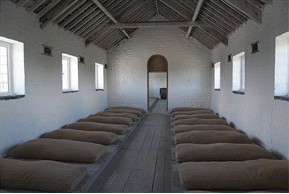
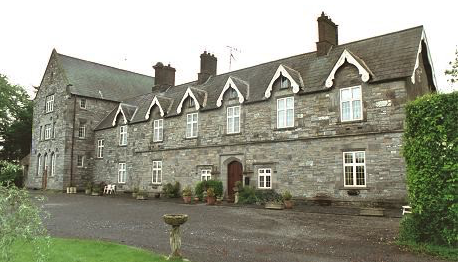
Life in the workhouse was harsh and frequently cruel. There were many rules. The food was poor. There was little to do. People were separated from their families, hungry, frustrated, badly treated, bored and mostly without hope. Often the inmates reacted against this, by breaking the rules and by fighting amongst themselves. Some preferred prison to the workhouse as the food was better and the regime not as strict.
The diet varied somewhat from workhouse to workhouse. Generally, it consisted of stirabout, which is like porridge, milk and potatoes. Children got bread. Adults received two meals a day and children three. Reports of the time show that the food was often of very poor quality. The workhouse diet remained very basic and it was not until the end of the 1800s that tea, bread for adults and a meat soup dinner were introduced.
Very little productive work was carried out. One of the rules was that the workhouse should not enter into competition with outside businesses. When numbers in the workhouse were large, it was difficult to find work for everybody. In the earlier years, the Capstan wheel was in operation in some workhouses. Women & children, maybe up to several hundred, went around in circles pushing a big wheel for grinding corn. Breaking stones for building roads was a common occupation for the men. The women did domestic jobs such as cleaning or helping in the kitchen or laundry and looking after the sick. Older inmates were put to work mending clothes and spinning wool. Girls were meant to be trained for domestic service. Oakum picking was carried out in many workhouses. This involved separating out the strands of old ship rope so that it could be reused.
One of the ways that workhouse numbers decreased was through emigration. The cost of emigration to landlords was less than that of keeping paupers in the workhouse. An Emigration Commission was set up. Its representatives visited every workhouse in Ireland. Those who wanted to emigrate were offered free passage, clothing and a little money. Between the years 1848-1850, 4,175 orphan girls aged 14-18 left Irish workhouses for Australia under a scheme supported by the Australian government. In the 1850s, the Poor Law started to assist young female paupers to Canada where there was demand for domestic servants.
There were large numbers of children in the workhouse. In 1850, there were up to 120,000 children. Conditions were terrible for them. An English Clergyman who was in Ireland at the time expressed his shock at the total failure to provide for these children. He described the children in Limerick workhouse as skeletons covered in soars and dressed in rags. Many of the children who survived the “famine” years grew up in the workhouse. These children only knew the workhouse existence.
Children were supposed to go to school in the workhouse where they were meant to learn reading, writing, arithmetic and the principles of the Christian religion. The reality was quite different. School teachers were often incompetent and cruel, incapable of teaching enormous classes of hungry and dirty children. From the 1860s onwards, social reformers pressed for the boarding out of children to foster families but this was slow to happen, probably because the workhouse would have had to pay the foster families. From about the 1870s onwards, the religious orders began to get involved and started setting up industrial schools, where children were meant to receive training. By the early 1900s, the days of children in the workhouse were beginning to draw to a close.
Though separate, the workhouse was also paradoxically a part of the locality in which it was situated. It provided business to local suppliers, some employment and medical care to the general population. Originally, the workhouse infirmary or hospital was just for the sick inmates. No qualifications were required for nurses and the level of care was very poor. From the 1860s, qualified nursing sisters began to make their way into the workhouses. Care of the sick improved greatly and the workhouse hospital was opened to non-inmates. These local hospitals were missed by many when the system was abolished in the early 1920s. Some of the workhouses became county hospitals or homes. However, for generations that followed, people had an awful fear of spending their final years in the County Home, being as it was part of the workhouse system.
Births Pre Famine and Post Famine
| 1841 | 1851 | ||
| Born in 1840 | 158,958 | Born in 1850 | 106,192 |
| Born in 1839 | 230,804 | Born in 1849 | 141,638 |
| Born in 1838 | 218,149 | Born in 1848 | 118,271 |
| Born in 1837 | 219,148 | Born in 1847 | 145,678 |
| Born in 1836 | 216,888 | Born in 1846 | 152,206 |
| Born in 1835 | 218,688 | Born in 1845 | 162,803 |
| Born in 1834 | 221,712 | Born in 1844 | 165,426 |
| Born in 1833 | 222,504 | Born in 1843 | 170,081 |
| Born in 1832 | 196,413 | Born in 1842 | 156,647 |
| TOTAL | 1,903,264 | 1,317,942 |
Prior to 1847 emigration did not reduce the population. That year 215,444 peopleemigrated to America and the Colonies double the previous year. From June, 1841, to March, 1851, there emigrated 1,240,737 persons, which greatly reduced the number of children to be enumerated in 1851.The actual number of deaths from 1841 to 1851, amounted to 1,361,051, and the deaths from extraordinary causes amounted to one third of this.
A large proportion of the deaths from such causes occurred in the years of famine, and the mortality in those years was, therefore, excessive 222,029 Fever, 134,555 Dysentery, 35,989 Cholera, 21,770 Starvation. The Census of 1861 gives the population as 5,764,543, being 787,842 less than that of 1851, a decrease of 12.02 per cent, in the last ten years. During this period as many as 1,163,418 persons emigrated from Ireland.
The table below gives some statistics for the immediate pre-famine period (figures for 1841).
| County | Population | Population Density per km2 (per mile2) | Literacy % | People in 4th class (worst) housing % |
| Antrim | 360,875 | 127 (329) | 41 | 23 |
| Armagh | 232,393 | 185 (480) | 30 | 28 |
| Carlow | 86,228 | 96 (249) | 36 | 27 |
| Cavan | 243,000 | 141 (366) | 23 | 34 |
| Clare | 286,394 | 91 (236) | 25 | 51 |
| Cork | 854,118 | 115 (297) | 27 | 47 |
| Donegal | 296,448 | 62 (160) | 19 | 43 |
| Down | 361,446 | 148 (383) | 40 | 21 |
| Dublin | 372,773 | 405 (1049) | 54 | 9 |
| Fermanagh | 156,481 | 93 (240) | 29 | 35 |
| Galway | 440,198 | 72 (185) | 15 | 49 |
| Kerry | 293,880 | 62 (160) | 23 | 60 |
| Kildare | 114,488 | 68 (175) | 35 | 27 |
| Kilkenny | 202,420 | 98 (254) | 29 | 26 |
| Laois1 | 146,857 | 85 (221) | 34 | 27 |
| Leitrim | 155,297 | 98 (253) | 24 | 43 |
| Limerick | 330,029 | 123 (318) | 34 | 46 |
| [London]derry | 222,174 | 107 (278) | 32 | 32 |
| Longford | 115,491 | 106 (274) | 27 | 29 |
| Louth | 128,240 | 156 (405) | 25 | 35 |
| Mayo | 388,887 | 70 (180) | 13 | 60 |
| Meath | 183,828 | 78 (203) | 27 | 35 |
| Monaghan | 200,442 | 155 (401) | 25 | 27 |
| Offaly2 | 153,930 | 77 (199) | 30 | 26 |
| Roscommon | 253,591 | 100 (258) | 20 | 43 |
| Sligo | 180,886 | 99 (255) | 19 | 46 |
| Tipperary | 435,553 | 101 (262) | 30 | 34 |
| Tyrone | 312,956 | 99 (257) | 27 | 33 |
| Waterford | 196,187 | 107 (277) | 23 | 26 |
| Westmeath | 141,300 | 77 (199) | 27 | 33 |
| Wexford | 202,003 | 86 (223) | 34 | 24 |
| Wicklow | 126,143 | 62 (161) | 37 | 28 |
- Laois Called “Queens County” at the time
- Offaly Called “Kings County” at the time
Genealogy research in Ireland may take you too emigration in any period from mid- 1600s to the 1900s by far the greatest number off Irish people left during the years off the Famine and just after it 1845-50. In that period alone 545,000 left for New York. If a ship arrived showing signs off sickness many of the Captains would have to pay a Major Tariff to land so many ships preferred to head for the area of Quebec where lighter tariffs were used.
The Workhouse exterior as seen on My Ireland Family Customised. We endeavour to make sure our clients get a full picture of the period of emigration and what was happening in Ireland in the 1800s.
The Dunshaughlin workhouse was erected in 1840-41 on a five acre site close to the Village of Dunshaughlin, the building was planned to accommodate 400 inmates. Its construction cost £4,938 plus £912 for fittings. The building was declared fit for habitation on 12 May 1841, and received its first admissions on 17 May that year .It is typical of the George Wilkinson designed properties. Some 130 were built in Ireland between 1838 and 1841 and 33 were built ten years later. Today approximately 30 are still standing 11 in the South of Ireland.
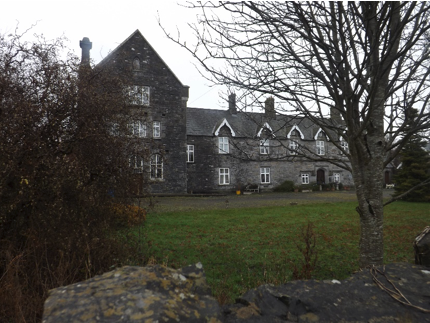
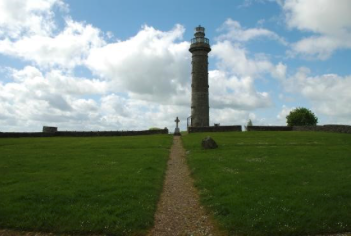
During the Irish Famine in the mid-1840s, many hundreds of people were crowded into the stone building in dreadful conditions. A burial ground was located to the rear of the workhouse, which you can still visit today, sometimes memorial services are conducted here for those who died during the famine. A poignant reminder off the loss of over 1 Million people to death, due to starvation, cholera and Typhoid.
In the post-famine years, the workhouse rarely had more than a few dozen inmates. During the First World War, the building was used to accommodate Belgian refugees, some of whom died there and were buried in the paupers’ graveyard. In 1920-21, the building was taken over as a barracks by the Black and Tans during the Irish War of Independence.
Following the creation of the Irish Free State in 1922, the workhouse system was abolished. After many years of vacancy and semi dereliction the main building was taken into private ownership in the 1990s and now is primarily a private residence.
